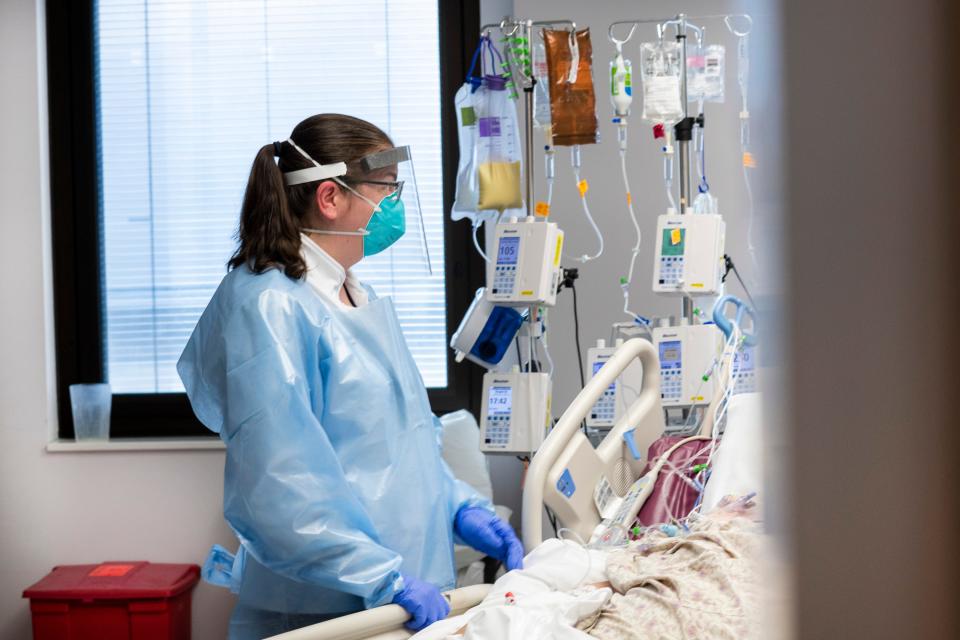COVID-19 hospitalizations falling in Akron, statewide. Is omicron wave coming to an end?
The omicron wave in Ohio seems to be receding, Ohio Department of Health Director Bruce Vanderhoff said in his COVID-19 update Thursday.

"There is light at the end of the tunnel," he said but noted that many hospitals are still facing a serious strain. "We're cautiously optimistic that we may be reaching the other side."
The number of people in Ohio hospitals with COVID-19 has dropped from a peak of 6,749 on Jan. 10 to 5,004 Wednesday.
The number of patients being treated for COVID-19 at Akron-area hospitals has dropped by nearly 59% in three weeks — from a record high of 399 on Jan. 6 to 165 on Thursday.
At Summa Health's Akron City and Barberton hospitals, there were 58 COVID patients, up from 57 on Wednesday. There were 82 at Cleveland Clinic Akron General, up from 81; 10 at Western Reserve Hospital, down from 13; and 15 at Akron Children's Hospital, up from 14.
Thursday's number was the lowest since Nov. 15, 2021, when 158 patients were hospitalized with COVID-19 in the Akron area.
But hospital leaders said they're waiting for all COVID-19 metrics to drop down, not just hospitalizations. Recently, case levels have reached close to 20,000 daily.
While the number of people entering the emergency room has gone down, the system still saw the highest number of deaths last week, said Dr. Brian Kaminski with Toledo-based ProMedica. Capacity is still above 90%.
"The stresses are still definitely not over," he said.
Broken down by region, the picture is more varied but still hopeful. Northern Ohio has seen a dramatically sharp decrease in hospitalizations, while central Ohio has seen a relatively smaller decrease.
Omicron, on the other hand, has shifted more to southern Ohio, which has not seen a decrease in hospitalization levels, according to state data. It's staying level.
"We’ve been stable now for over a little more than a week, maybe starting to trend down,” said Dr. Stephen Feagins, chief clinical officer for Mercy Health Cincinnati.
More than 2,000 Ohio National Guard members are still deployed to help overwhelmed hospitals, and more units are being shifted to the southern part of the state.
COVID-19 testing sites in Canton, Cleveland and Akron closed earlier this month with decreased demand. As of this week, the vast majority of National Guard-supported testing sites were now in central or southern Ohio.
Vanderhoff also addressed questions on recent guidance changes allowing schools to discontinue contact tracing.
"What we’re advising parents is that the exposure is everywhere," he said, given how contagious omicron is. "The reality is there is virtually no school” able to do universal contract tracing.
Beacon Journal staff writer Betty Lin-Fisher contributed to this report. Titus Wu is a reporter for the USA TODAY Network Ohio Bureau, which serves the Columbus Dispatch, Cincinnati Enquirer, Akron Beacon Journal and 18 other affiliated news organizations across Ohio.
This article originally appeared on Akron Beacon Journal: COVID-19 hospitalizations falling in Akron. Is omicron wave ending?
